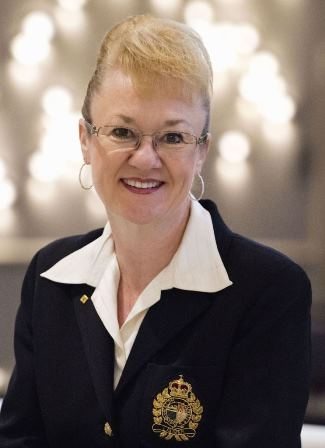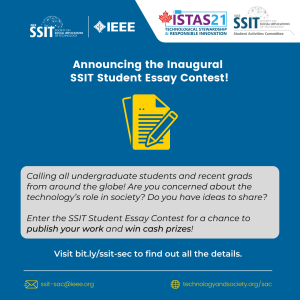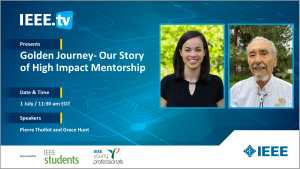As we gear up for another important IEEE Presidential Election we though it would be important to engage with the presidential candidates. Our editor in chief, Dr. Eddie Custovic interviews Wanda Reder.
- Who is Wanda Reder?
I am the Chief Strategy Officer (CSO) at S&C Electric Company in Chicago. Today, my responsibilities include strategy, competitive positioning, and corporate acquisitions. Earlier at S&C, my work pioneered smart grid deployments and projects that integrated wind, solar energy, and utility-scale batteries into traditional utility systems. Starting as an engineer at Northern States Power (NSP), an electric utility headquartered in Minneapolis, a steady career progression ultimately led to my role as Vice President with ComEd/Exelon, where I oversaw asset management, engineering, planning, standards and many projects that integrated technology into the operations.
I am an IEEE Fellow and received the 2014 IEEE Richard M. Emerson Award for leadership in the IEEE Smart Grid program and the IEEE Power and Energy Society (PES), including the creation of its Scholarship Fund program. As the first woman president of IEEE PES, I launched IEEE Smart Grid, positioning IEEE as the leading source for information on smart-grid technology. I’m a member of the US Department of Energy’s Electricity Advisory Committee and was invited to be a member of the National Academy of Engineering in 2016 for leadership in electric power delivery and workforce development.
Raised on a cattle ranch in South Dakota, my work ethic has served me well over a 29-year career in the electric utility industry. I am collaborative, strategic, value diversity, and have been described as being a results-oriented executive with a track record of accomplishment, leadership, and vision.
- Going back in time, describe to us Wanda Reder as a young professional.
As an engineering student at South Dakota State University, I interned for Daktronics and the National Rural Electric Cooperative Association (NRECA) in Washington DC, where I first became interested in power engineering. After graduating in 1986, my first job at NSP was to design conservation and load management programs to reduce peak loads. In parallel, I received an MBA at the College of St. Thomas focusing on New Ventures, having always gravitated to start-up activity and the adoption of new technology and processes. A notable achievement was my design and execution of the first wide-scale air conditioner and electric water heater cycling program, which significantly reduced peak loads.
As a young professional, I had big ideas and was fortunate to have corporate support to get the resources I needed for implementation. At age 33, I launched and became President and CEO of Ultra Power Technologies, a subsidiary of NSP that provided predictive cable testing in the US and Canada. This led to my participating in IEEE, where standards for cable testing were being developed within the Insulated Conductor Committee of IEEE PES. I participated in the working group that created guides and standards for medium voltage in-situ cable testing—something important, as it directly impacted my company at the time.
- What are some of the major challenges that IEEE faces in the coming years and how do you plan to address them?
IEEE has unprecedented global reach and technical breadth, yet for several years we have approved deficit budgets that are increasingly dependent upon interest from reserves. With membership declining, the revenue growth rate is down and overheads are increasing. These factors create financial pressures, increasing infrastructure charges so that some Societies are finding it difficult to make ends meet. Strategic planning efforts continue to address these challenges while positioning the organization for future success.
As the IEEE President, my focus is to execute the strategic plan. For long-term financial success, we will need to control overheads, sunset fatigued activity, and offer new, value-based services. This could include transforming technical content to customize information and offering competency-based, IEEE-certified education—especially in emerging multidisciplinary areas. I can help IEEE achieve a balanced budget with reduced infrastructure charges, enabling increased investment in membership services. I will also focus on member engagement to increase participation and adjust IEEE offerings to be more relevant and valued—particularly by young professionals and industry.

- Currently, young professionals feel that some societies are poorly in tune with the needs of young professionals. If you are elected, what will you undertake to better engage societies with young professionals?
We need to be diligent in addressing the needs of Young Professionals. This led me as PES President to launch the IEEE Power & Energy Society Scholarship Plus Initiative, a major contributor to IEEE PES growth in students and Young Professionals. It has attracted $6.5M in philanthropic contributions, enabling over 900 scholarship awards since 2011 and nearly doubling the pipeline of graduating power engineers. But we can’t stop there. Societies need to continue to engage Young Professionals, maintaining contact with students as they graduate, offering career experiences and networking opportunities, and providing opportunities for them to participate through all levels at IEEE, including on major boards.
As IEEE President I will share best practices and better integrate Young Professional activity across the organization. Contact information of all Young Professional leaders needs to be shared to facilitate connection through tools like IEEE Collabratec. My commitment is to provide leadership that better engages Young Professionals, with a focus on becoming a more nimble organization that can incentivize, encourage and integrate their increased participation, and provide products and services that meet their rapidly evolving expectations.
- Why should young professionals vote for you?
I believe Young Professionals have a vested interest voting for me because my track record clearly illustrates my commitment to pursue strategies that builds a stronger Institute through engagement with the engineering leaders of tomorrow.
My qualifications include executive leadership in the power industry founded upon engineering and business education. Multiple IEEE board experiences and global involvement has provided a broad understanding of IEEE and membership interests. The success of IEEE Smart Grid highlights my technical vision for the organization—one that can be leveraged in other emerging multi-disciplinary areas to further advance IEEE as a trusted source and technical leader. Lastly, a proven track record of leadership has been demonstrated by the success of the IEEE Power & Energy Society (PES) and IEEE PES Scholarship Plus Initiative. These skills and experience uniquely qualify me for the role of 2017 IEEE President-Elect.
Interview conducted by
Eddie Custovic, Editor in Chief – IMPACT by IEEE Young Professionals








